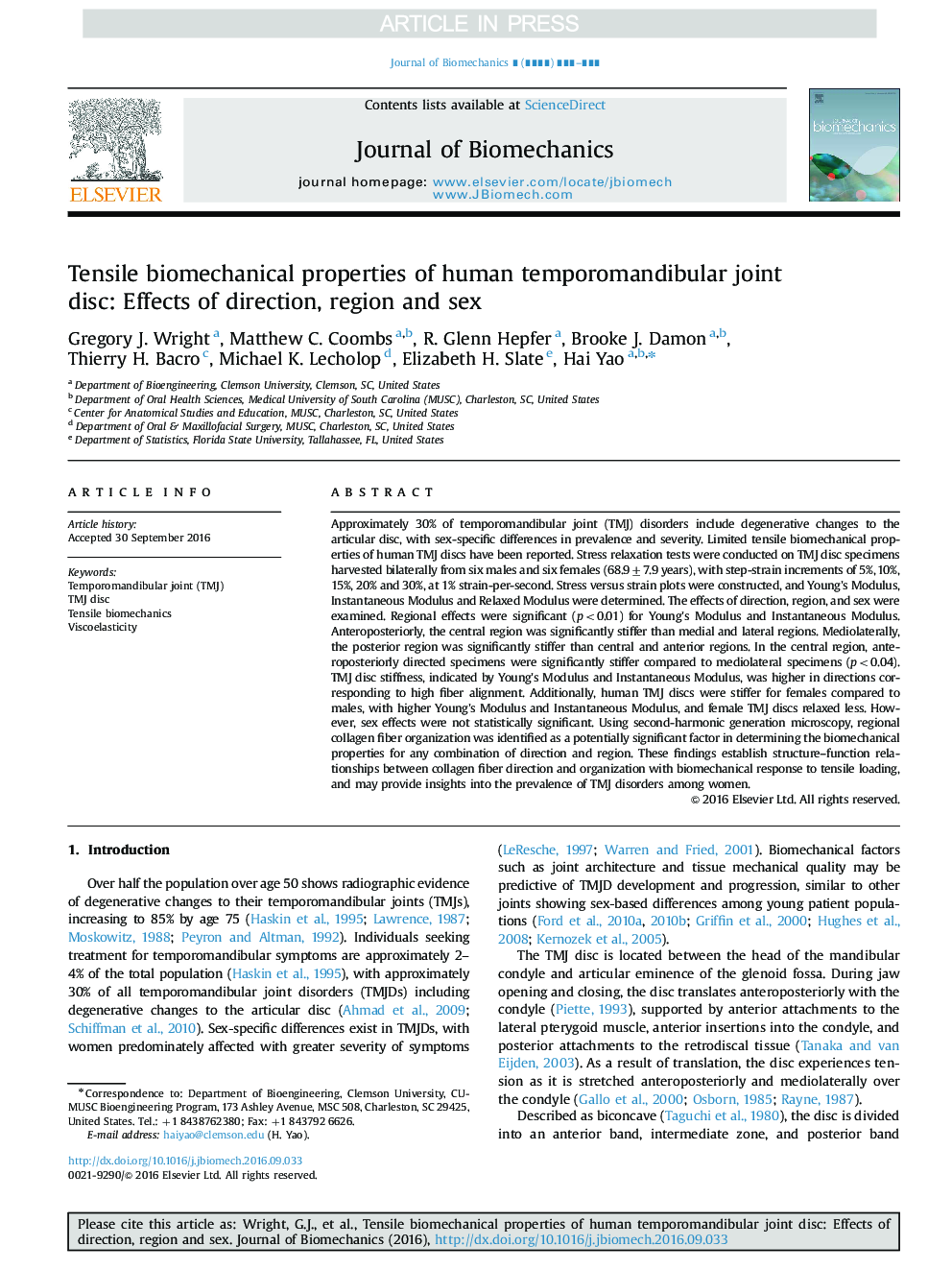| Article ID | Journal | Published Year | Pages | File Type |
|---|---|---|---|---|
| 5032272 | Journal of Biomechanics | 2016 | 8 Pages |
Abstract
Approximately 30% of temporomandibular joint (TMJ) disorders include degenerative changes to the articular disc, with sex-specific differences in prevalence and severity. Limited tensile biomechanical properties of human TMJ discs have been reported. Stress relaxation tests were conducted on TMJ disc specimens harvested bilaterally from six males and six females (68.9±7.9 years), with step-strain increments of 5%, 10%, 15%, 20% and 30%, at 1% strain-per-second. Stress versus strain plots were constructed, and Young׳s Modulus, Instantaneous Modulus and Relaxed Modulus were determined. The effects of direction, region, and sex were examined. Regional effects were significant (p<0.01) for Young׳s Modulus and Instantaneous Modulus. Anteroposteriorly, the central region was significantly stiffer than medial and lateral regions. Mediolaterally, the posterior region was significantly stiffer than central and anterior regions. In the central region, anteroposteriorly directed specimens were significantly stiffer compared to mediolateral specimens (p<0.04). TMJ disc stiffness, indicated by Young׳s Modulus and Instantaneous Modulus, was higher in directions corresponding to high fiber alignment. Additionally, human TMJ discs were stiffer for females compared to males, with higher Young׳s Modulus and Instantaneous Modulus, and female TMJ discs relaxed less. However, sex effects were not statistically significant. Using second-harmonic generation microscopy, regional collagen fiber organization was identified as a potentially significant factor in determining the biomechanical properties for any combination of direction and region. These findings establish structure-function relationships between collagen fiber direction and organization with biomechanical response to tensile loading, and may provide insights into the prevalence of TMJ disorders among women.
Related Topics
Physical Sciences and Engineering
Engineering
Biomedical Engineering
Authors
Gregory J. Wright, Matthew C. Coombs, R. Glenn Hepfer, Brooke J. Damon, Thierry H. Bacro, Michael K. Lecholop, Elizabeth H. Slate, Hai Yao,
